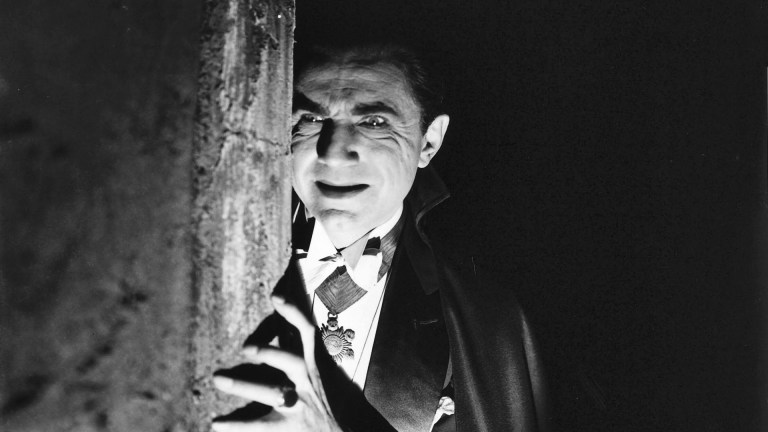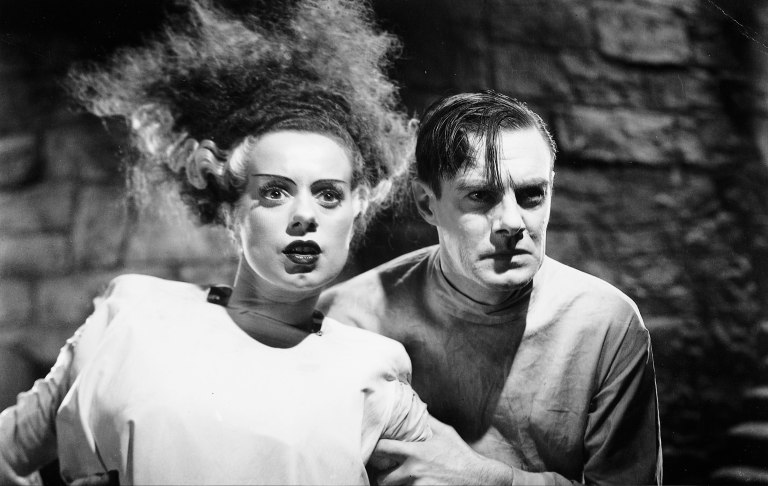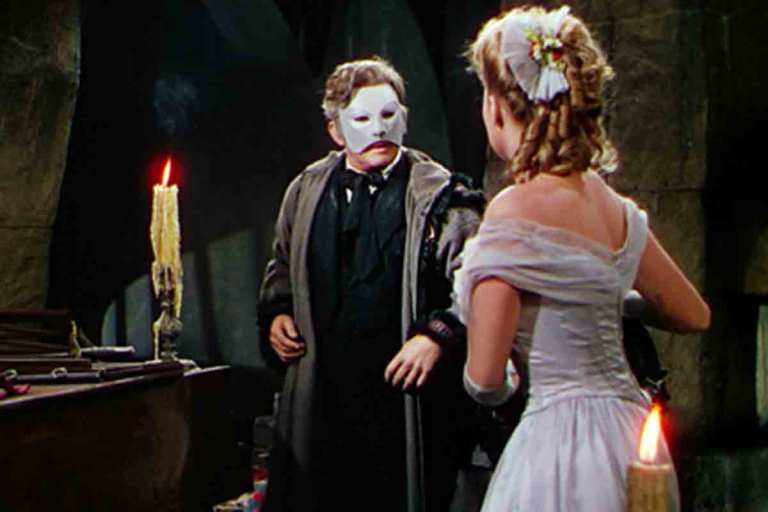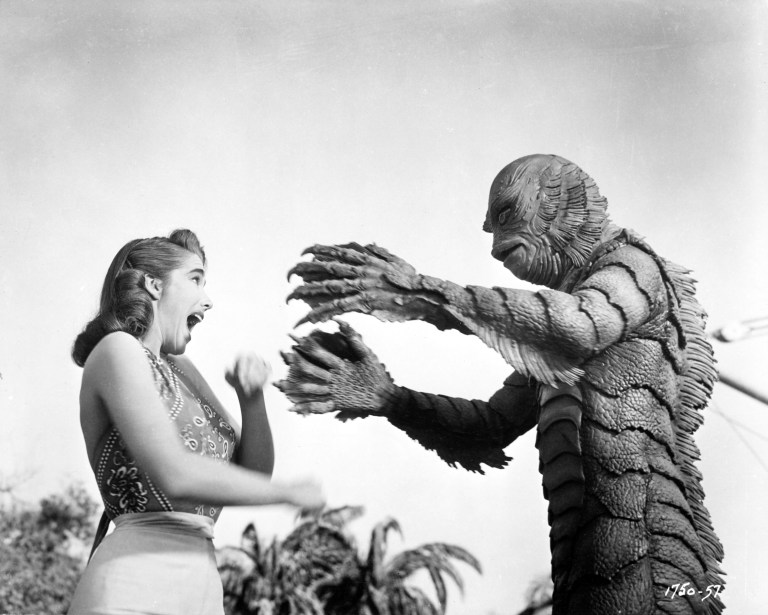The 10 Best Universal Classic Monsters Movies
From 1931 to 1954, Universal produced nearly 40 creature features that turned the company into the “it” house of horrors and cemented it as one of Hollywood’s major studios.

Marvel is often credited as being the first cinematic universe created, however this isn’t the case. The credit actually goes to the Universal Classic Monsters, which remains one of the most influential and enduring universes in cinema. While 1923’s The Hunchback of Notre Dame holds the distinction of being Universal’s first monster, the Universal Monsters connected universe truly started with the crossover film Frankenstein Meets the Wolf Man (1943) and ended in 1948 with Abbott and Costello Meet Frankenstein, which also features Dracula, the Invisible Man, and the Wolf Man. The entire Universal Classic Monsters lineup, popularly beginning with Dracula (1931), changed Hollywood forever, bringing horror to the forefront and defining the genre during the earliest years of sound pictures. The iconic monsters born out of this string of creature features not only became pop culture icons, but influenced decades of horror to come. To this day, they remain profoundly resonating to viewers, namely due to their allegorical and metaphorical possibilities that leave them so open to interpretation.

Over the years there have been remakes of Universal Monsters movies, such as The Mummy (1999), The Wolfman (2010), and The Invisible Man (2020). Recently there has been a revival of Universal monster features, with films like the upcoming Abigail, starring the iconic scream queen Melissa Barrera. The picture is a modern reimagining of Universal’s iconic Dracula’s Daughter (1936). A Guillermo del Toro take on Frankenstein is also currently in production, starring Jacob Elordi as The Monster, Oscar Isaac as Dr. Frankenstein, and Mia Goth as the leading lady. 1931’s The Wolf Man is also making a comeback and will star Christopher Abbott, with a release date set for October 25, 2024. The sources of inspiration for these pictures deserve to be brought back to the forefront. Read on below to discover the best of Universal’s Classic Monsters.
Dracula (1931)

Dracula is a true classic masterpiece that still holds well nearly a century after its release. The detail-oriented set design, black and white cinematography, gothic atmosphere, and unpolished sound design encapsulate the vampire spirit in a way modern vampire films aren’t able. Bela Lugosi’s captivating and hypnotic performance as the titular vampire made him a global sensation. It’s his character that comes to the minds of most when they hear the name Dracula.
The movie follows the Transylvanian count to London, where he’s on the hunt for new blood and begins wreaking havoc. Upon meeting the beautiful Mina (Helen Chandler) and her fiancé Jonathan Harker (David Manners), he develops an obsession with her. After being bitten in her sleep by Dracula, Mina’s health begins to deteriorate. When Professor Van Helsing (Edward Van Sloan) is called in to diagnose her, he fights to save her from becoming a vampire.
Frankenstein (1931)

This pre-code classic was directed by the iconic James Whale, the director responsible for some of Universal’s greatest horror films. Frankenstein was a colossal blockbuster success and was the biggest hit of its year. Loosely based on Mary Shelley’s 1818 novel, the film revolves around Dr. Henry Frankenstein (Colin Clive) and his obsession with creating life from stolen body parts. Once he proves successful, the semi-gentle Monster is born.
The tall, withered, and hideously terrifying monster is played by Boris Karloff in a role that cemented the actor in cinematic history. Karloff was flawless in his performance, conveying so much in his expressions and body language. His portrayal of The Monster demands sympathy for the creature, one who isn’t at all evil or ill-intentioned, but misunderstood. Frankenstein’s Monster was never the villain in this story.
Drácula (1931) (Spanish version)

While Tod Browning’s Dracula was being shot during the day, another cast and crew used the same set to shoot a Spanish-speaking rendition at night. Although both productions tell the same story, Universal’s Spanish iteration of Dracula is arguably better than Browning’s film starring Lugosi. The film’s longer duration, nearly 30 more minutes, allowed for deeper character development. It’s better directed, fluidly shot, and gives off a bolder vibe. Drácula also had the fortune of not having to deal with the restrictions of the Hays Production code. The film is a definite must-watch for aficionados of classic horror.
The Invisible Man (1933)

The Invisible Man is another Universal hit which took its inspiration from literature, H.G. Wells’ 1897 novel of the same name to be precise. James Whale also directed this masterclass in style and craftsmanship. The picture is a prime example of outstanding special effects in an age where the technology needed wasn’t yet available. It was the film responsible for laying the groundwork for green screen technology. After Frankenstein, Invisible Man got the most number of sequels and spinoffs of any Universal Classic Monster movie.
Dr. Jack Griffin (Claud Rains) becomes a very unlucky scientist when he discovers the key to invisibility. Unable to reverse his condition, his mind slowly begins to deteriorate, slowly descending into madness and shedding him of all his humanity. He becomes a menace to a small town, relishing in his new violent nature. In his reign of terror, he takes over 100 lives—the biggest body count of any Universal monster, and perhaps more than any other horror villain. He doesn’t want to stop there. What Dr. Griffin wants is complete world domination.
The Bride of Frankenstein (1935)

After Frankenstein’s immense success Universal wanted to waste no time in creating a sequel. James Whale almost didn’t direct Bride of Frankenstein, he had no desire. He believed he was done with the franchise and was unimpressed by the first few scripts. “They’ve had a script made for a sequel, and it stinks to heaven. In any case, I squeezed the idea dry on the original picture, and never want to work on it again,” he shared with a friend. Eventually he would relent on the condition that the studio give him more creative control. Thankfully he came around, because it’s not common that a sequel surpasses the original.
The movie was ahead of its time, with queer-coded and anti-heteronormative subtext. The story sees Dr. Frankenstein team up with Dr. Pretorius (Ernest Thesiger) to create a bride for The Monster. Arguably, The Bride of Frankenstein is the greatest of all the Universal Monsters movies—a pitch-perfect mixture of gothic horror, tragedy, and comedy. The final twenty minutes of the film is one of the most sublime sequences in the genre—one that cannot be missed.
Werewolf of London (1935)

Werewolf of London, the first feature-length werewolf film, is often shadowed by 1941’s The Wolf Man. While it’s nowhere up to par with its successor, it’s still an excellent picture that makes for a thoroughly enjoyable watch. It follows the story of the rather unlikeable and renowned scientist Dr. Wilfred Glendon (Henry Hull), who travels to Tibet in search of the Mariphasa, a rare flower that can only blossom under the moonlight. The flower also happens to be a temporary antidote for lycanthropy. When collecting the flower, he’s attacked and bitten by a feral humanoid creature, who happens to be a werewolf. When he arrives back in London, Dr. Glendon realizes he’s cursed with a new thirst for blood.
Dracula’s Daughter (1936)

Following Bride of Frankenstein’s success, James Whale was set to direct this movie. He was concerned about directing too many horror pictures in a row and went on to work on Show Boat (1936) instead, so Lambert Hillyer came in to direct. The film is an excellent sequel, but also works great as a standalone film. Gloria Holden gives a mesmerizing performance as the seductive, mysterious, lesbian-coded vampire in this story that is clearly a nod to Sheridan Le Fanu’s 1872 novel Carmilla.
Countess Marya Zaleska (Holden) has inherited her father’s thirst for blood—a curse she’s so desperate to rid herself of. When she hears of her father’s death at the hands of Van Helsing, she steals his body to ritualistically burn in a pyre, in the hopes that it will cure her of vampirism, but it doesn’t work. The Countess seeks Dr. Garth’s (Otto Kreuger) help after she hears him discuss how any obsession and mind disease can be cured through “sympathetic treatment,” but she cannot control her bloodlust, especially when it comes to his assistant Janet (Marguerite Churchill).
The Wolf Man (1941)

Universal’s second stab at a lycanthropic creature feature was written by Curt Siodmak and directed by George Waggner. The movie follows Larry Talbot, played by Lon Chaney Jr., who returns to his family’s estate in Wales to bury his recently deceased brother. He becomes enchanted by a beautiful young woman, Gwen (Evelyn Ankers), who works at the local antique shop. After several persistent date proposals, Gwen relents and meets him in the woods one night, where they go and have their fortunes told along with her friend Jenny (Fay Helm). When Jenny is attacked by a wolf, Larry intervenes to save her and gets bitten. Soon, events take a turn for the worse.
The Phantom of the Opera (1943)

Following the 1925 silent film, 1943’s Phantom of the Opera was Universal’s second attempt at an adaptation of Gaston Leroux’s 1910 novel. It was the first Technicolor adaptation of the movie. Interestingly enough, it’s also the only Universal Classic Monsters movie to have been created in Technicolor. The lavish picture is filled with luscious colors that pop, and has a superb set design and cinematography. This timeless classic uses excellent direction and camerawork that make it a sight to behold to this day.
The romantic horror stars Claude Rains, who gives an intense and passionate performance as the obsessed Phantom. The acid-scarred composer rises from sewers of Paris to aid the career of Christine, the rising opera star who’s the object of his desire, magnificently played by Susanna Foster. Soon, piling bodies and crimes start plaguing the Paris Opera House.
Creature From the Black Lagoon (1954)

The Shape of Water, co-written and directed by Guillermo del Toro, was a love letter to the beloved and famous Creature in this classic horror. Creature From the Black Lagoon is considered the last creature added to the official list of Universal Classic Monsters. While it was long underappreciated, the movie has gained a cult following over the years. Eerie castles and gothic horror were out, and science fiction was in at the time of its release. The movie is about an amphibious humanoid creature, the last of its kind.
It follows an expedition into the Amazon after a team discovers fossilized evidence of a prehistoric Gill-man, who could be the missing link between land and sea animals. Unbeknownst to them, a Gill-man stalks them throughout their journey, and eventually falls in love with and attempts to abduct the beautiful Kay Lawrence (Julie Adams). Ricou Browning played the Creature in the underwater scenes and Ben Chapman played the character on land. Creature From the Black Lagoon was originally released in 3D, and you can still watch the film in its native format if you have a 3D television using the Blu-ray disc released by Universal Studios.
Further reading:
